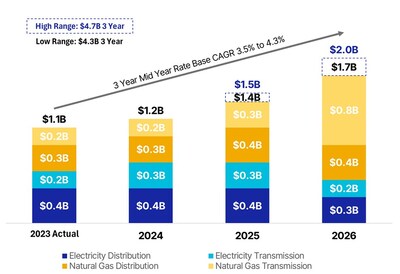Sign up for daily news updates from CleanTechnica on email. Or follow us on Google News!
A week or so ago, I came across a social media post from Electrify America that left me a little confused. The stations seemed laid out well. There’s good room, well-marked spaces, and even a lot of space to pull through with a small trailer! But, the company put in some bollards with “EV Only” signs front and center, blocking anyone from driving through.
Why in the world would you put bollards in the way of what otherwise would have made a great pull-through opportunity??
— Jenn @ Charge To The Parks (@JenniferSensiba) June 7, 2024
This got me to thinking (a dangerous pastime) about EV charging in general, and how it compares to gas stations. I mean, you can basically pull into any gas station with a trailer and get fueled up. But most EV charging stations are laid out to only support pull-in parking. In many cases, the station itself is in the way of pulling through, while in other cases, there’s some dumb barrier like a bollard or a wheel stop placed there that serves no real purpose other than to challenge my creativity or force me to unhook.
I have to ask myself, how did we get here?
Reinventing The Wheel
This is a topic I’ve come across before, only in different forms. In short, when a major technological change happens, designers and engineers find themselves with newfound creative freedom, and they want to express that freedom and innovate. Sometimes, they find even better ways to do things. But, other times, they try to reinvent the wheel.
This happened when digital cameras started to become popular and affordable 30 years ago:
Without the need for film, a reflex mirror, or other old technology, Kodak’s designers and engineers decided to do a new take on the camera. The resulting DC40 was designed to be more like binoculars than a traditional flat, in-your-face camera. But people quickly found out that it made your arms tired, wasn’t great for shots in low light, and otherwise kind of sucked. Ultimately, the professional and prosumer camera world stuck with traditional camera layouts because they just worked better.
Gas stations are much the same way. Gas is the dirty, nasty old technology that needs to go, but we have to keep in mind that gas stations have changed a lot over the last century to better serve drivers. So, what we see at gas stations is the culmination of a century of people learning things the hard way. Stuff that didn’t work came and went, and what’s left now is wisdom that we’re free to keep or throw away.
Obviously, this is an ongoing process. Gas stations continue to evolve to suit changing conditions, and people will continue to come up with better ideas. So, I’m not saying that there’s absolutely no room for experimentation or innovation. What I am saying is that we would be fools to assume that there’s no value in what has been learned fueling vehicles for all of those decades in a dog-eat-dog industry.
The trick now is to figure out what good we can get from the gas stations and what stuff we can do better with EV charging. But, how do we figure this out?
Knowledge vs Wisdom
It’s a bit like this scene in Star Wars Episode I:
There’s no denying that charging companies have tons of knowledge. Unlike many gas guys, they know kilowatts from kilowatt-hours. Many charging experts drive EVs and know what an EV driver needs. They also know what has worked for EV charging over the last decade and what could be done better.
But, compared to 100 years of experience through grueling trial, error, and failure, that’s not much wisdom. While EVs are different than gas cars, the basics are still the same:
- Most ride on four wheels
- Some EVs are large commercial vehicles, and others pull trailers
- All EVs (at least today) are driven by a person, or are at least supervised by a person
These three things are well-suited to a gas station. Cars drive in. Cars drive out. Cars have a person inside who likes shade and being kept dry from the rain. Having a battery pack instead of a gas tank changes none of these fundamental driver needs. So, it makes sense to follow the same proven layout of pull-through stations with a canopy over the top in most situations instead of throwing the baby out with the bathwater.
Things We Can Throw Out With The Bathwater
While these things are the same, there are some real differences between gas/diesel and electric that we do need to accommodate.
The biggest one is time spent. Even the fastest-charging EVs now stay for 10–15 minutes in most cases. So, the cheapest tiny cinderblock convenience stores that cater to people who want to get in and get out fast probably aren’t going to cut it. When people are stuck for a few minutes, they’ll want a restroom, better food, and likely a place to sit and use their phones or laptops.
The other big difference is that most locals won’t need to visit EV charging stations in the future. So, catering to a mix of travelers, commercial drivers, rideshare drivers, and people who are tired from an unusually long day of errands makes sense. Everyone else needs to be charging at home or at work. So, again, amenities matter more than ever. The stations that survive will look like Buck-ee’s or QuikTrip stations, not the dirty stations people go to today to get the cheapest gas.
The Good News: Current Stations Can Adapt To This
After seeing a variety of charging stations on trips across the United States, I have some good news: most EV charging stations can be adapted to better fit the needs of EV drivers.
First off, canopies are relatively easy to build. They don’t need to look like gas station canopies. A simple sloping sheet metal roof like you’d find over a doctor’s parking space near the hospital would suffice. Add solar panels for bonus points. I don’t think that’s a complicated thing to do, even if there is still some expense involved.
Adding one or two pull-through stalls is even easier in most cases, and through subtraction. Removing a bollard, curb, or wheel stop is enough in many cases to get the job done and let people pull through. Adding a couple of longer cables to reach an adjacent area where a trailer can fit is another good option.
Amenities is a much bigger challenge for existing stations in poorly chosen places (especially at night when host businesses close), but solving the first two problems is far better than nothing.
Featured image by Jennifer Sensiba.
Have a tip for CleanTechnica? Want to advertise? Want to suggest a guest for our CleanTech Talk podcast? Contact us here.
Latest CleanTechnica.TV Videos
CleanTechnica uses affiliate links. See our policy here.





